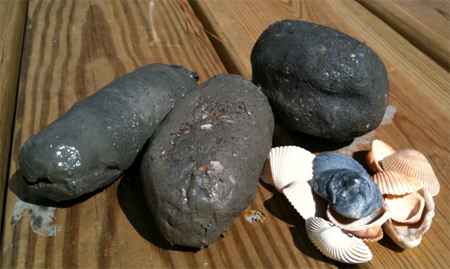We finally received the itinerary for the #GRAIL #NASATweetup and it was worth the wait! The lineup for the day before the launch is amazing. Here are the details for September 7. Everyone in the afternoon session is a superstar. Be sure to tune in to NASATV to follow the Ustream video of the sessions! And of course, follow the #NASATweetup and #GRAIL hashtags on Twitter to follow our live reports that day! And then, of course, the launch on the following day (we hope!), September 8th.
GRAIL NASATweetup // September 7, 2011 // Kennedy Space Center, FL
7 a.m. to 8:45 a.m. – Registration at the Kennedy Space Center Visitor Complex (@ExploreSpaceKSC )
9 a.m. – Welcome by Trent Perrotto (@NASA ) & Veronica McGregor (@NASAJPL ) in the Debus Center (entry at 8:30 a.m.)
9:05 a.m. – Meet the tweeps
9:50 a.m. to 1 p.m. – Tour of NASA’s Kennedy Space Center (@NASAKennedy ) and Cape Canaveral Air Force Station, including stops at the Vehicle Assembly Building and Press Site launch countdown clock, Launch Complex 17 and #GRAIL, and Launch Complex 41 from which Mars Science Laboratory Curiosity (@MarsCuriosity ) will launch
1 to 3 p.m. – Break/Lunch on your own at Kennedy Space Center Visitor Complex
3 p.m. – Jim Adams (@NASAJim ), deputy director, Planetary Division, Science Mission Directorate at NASA Headquarters, introduces Administrator Charles Bolden
(NASA Television begins http://www.ustream.tv/channel/nasa-tweetup)
3:20 p.m. –MoonKAM (@GRAIL_MoonKAM ) presentation from the Sally Ride Science (@SallyRideSci ) team
3:40 p.m. – Sami Asmar, GRAIL deputy project scientist, NASA’s Jet Propulsion Laboratory (JPL)
4 p.m. – Maria Zuber, GRAIL principal investigator, Massachusetts Institute of Technology
4:20 p.m. – Break
4:30 p.m. – Eyes on the Solar System (@NASA_Eyes) demo with Doug Ellison (@Doug_Ellison ), JPL Visualization Producer
5 p.m. – Vern Thorp, manager, NASA Programs, ULA (@ULAlaunch )
5:15 p.m. – Stu Spath, chief spacecraft engineer, Lockheed Martin (@LockheedMartin )
5:30 p.m. – Neil deGrasse Tyson (@NeilTyson ), Frederick P. Rose director at the Hayden Planetarium at the American Museum of Natural History (@AMNH )
6 p.m. – Group photo in the rocket garden
















